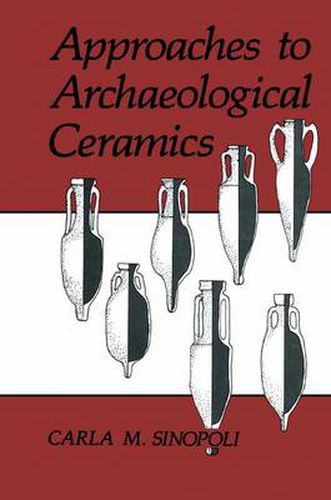Readings Newsletter
Become a Readings Member to make your shopping experience even easier.
Sign in or sign up for free!
You’re not far away from qualifying for FREE standard shipping within Australia
You’ve qualified for FREE standard shipping within Australia
The cart is loading…






This title is printed to order. This book may have been self-published. If so, we cannot guarantee the quality of the content. In the main most books will have gone through the editing process however some may not. We therefore suggest that you be aware of this before ordering this book. If in doubt check either the author or publisher’s details as we are unable to accept any returns unless they are faulty. Please contact us if you have any questions.
More than any other category of evidence, ceramics ofters archaeologists their most abundant and potentially enlightening source of information on the past. Being made primarily of day, a relatively inexpensive material that is available in every region, ceramics became essential in virtually every society in the world during the past ten thousand years. The straightfor ward technology of preparing, forming, and firing day into hard, durable shapes has meant that societies at various levels of complexity have come to rely on it for a wide variety of tasks. Ceramic vessels quickly became essential for many household and productive tasks. Food preparation, cooking, and storage-the very basis of settled village life-could not exist as we know them without the use of ceramic vessels. Often these vessels broke into pieces, but the virtually indestructible quality of the ceramic material itself meant that these pieces would be preserved for centuries, waiting to be recovered by modem archaeologists. The ability to create ceramic material with diverse physical properties, to form vessels into so many different shapes, and to decorate them in limitless manners, led to their use in far more than utilitarian contexts. Some vessels were especially made to be used in trade, manufacturing activities, or rituals, while ceramic material was also used to make other items such as figurines, models, and architectural ornaments.
$9.00 standard shipping within Australia
FREE standard shipping within Australia for orders over $100.00
Express & International shipping calculated at checkout
This title is printed to order. This book may have been self-published. If so, we cannot guarantee the quality of the content. In the main most books will have gone through the editing process however some may not. We therefore suggest that you be aware of this before ordering this book. If in doubt check either the author or publisher’s details as we are unable to accept any returns unless they are faulty. Please contact us if you have any questions.
More than any other category of evidence, ceramics ofters archaeologists their most abundant and potentially enlightening source of information on the past. Being made primarily of day, a relatively inexpensive material that is available in every region, ceramics became essential in virtually every society in the world during the past ten thousand years. The straightfor ward technology of preparing, forming, and firing day into hard, durable shapes has meant that societies at various levels of complexity have come to rely on it for a wide variety of tasks. Ceramic vessels quickly became essential for many household and productive tasks. Food preparation, cooking, and storage-the very basis of settled village life-could not exist as we know them without the use of ceramic vessels. Often these vessels broke into pieces, but the virtually indestructible quality of the ceramic material itself meant that these pieces would be preserved for centuries, waiting to be recovered by modem archaeologists. The ability to create ceramic material with diverse physical properties, to form vessels into so many different shapes, and to decorate them in limitless manners, led to their use in far more than utilitarian contexts. Some vessels were especially made to be used in trade, manufacturing activities, or rituals, while ceramic material was also used to make other items such as figurines, models, and architectural ornaments.